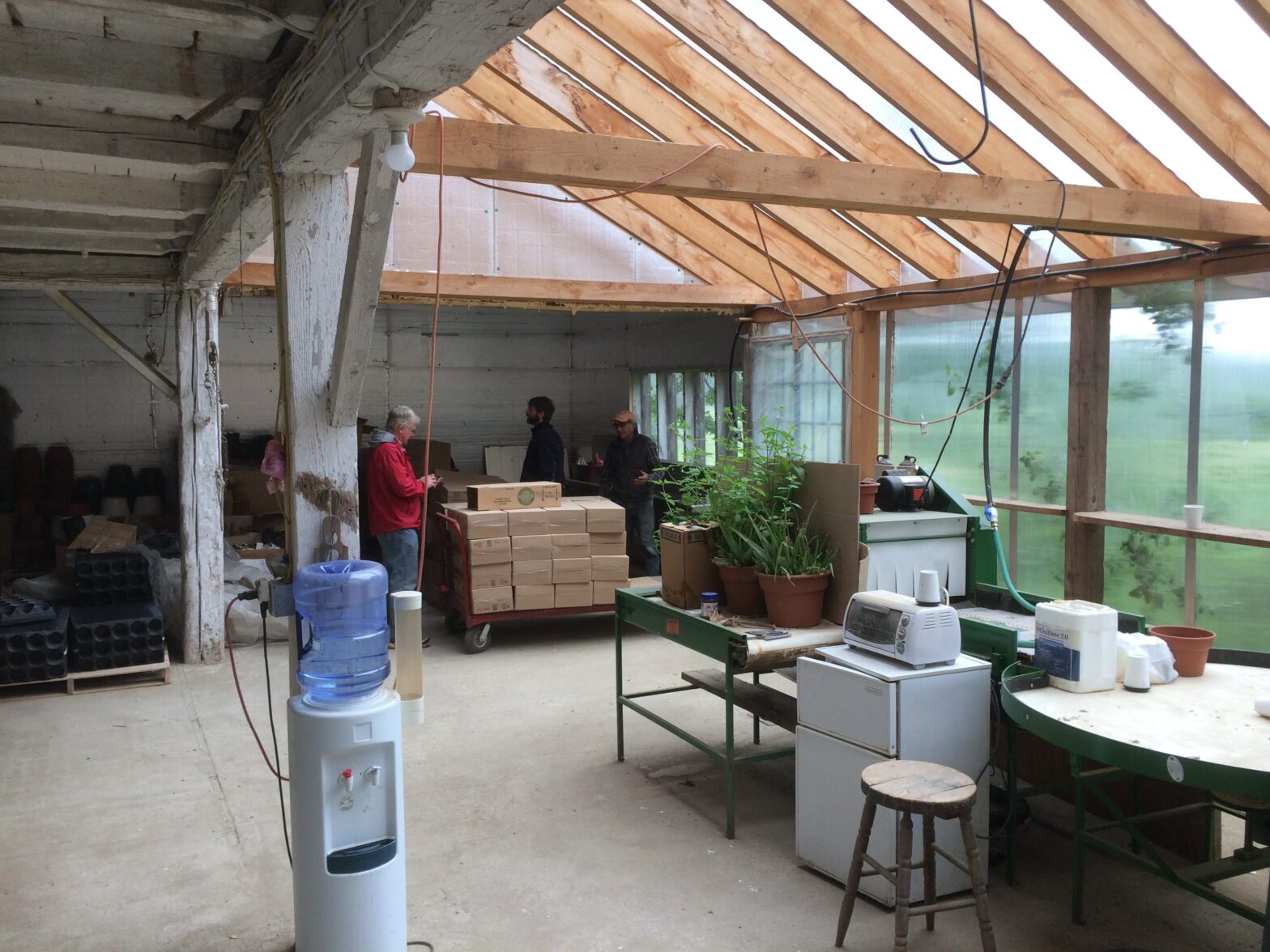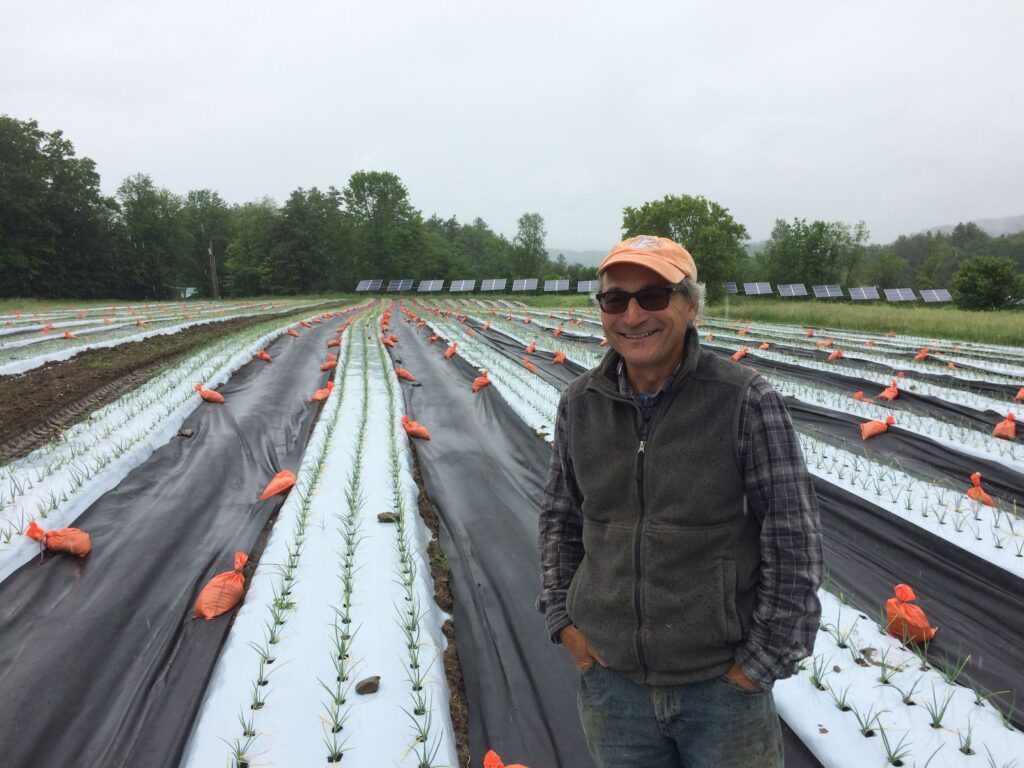Howard Prussack of High Meadows Farm in Westminster West, Vermont grows 7 acres of vegetables and wanted to improve his vegetable washing space. He imagined a bright and warm space instead of the dark and cool dairy barn they were working out of. With a goal of creating a fun and happy place to work, he set to work on making the investment needed to make these infrastructure upgrades a reality for the farm.
The upgrades that he decided to make were to 1) fix the floor and 2) let in natural light. Leveling out the floor and pouring the concrete was a large task, but greatly improved the working area by making it easier to move things around on carts. He does wish that it had a nicer finish to it as it was left rougher than desired. It is smooth enough to use a pallet jack, but polished was what was expected, but not what he ended up with. It makes it more challenging to clean. Another opportunity Howard wished he’d acted on was adding tubing for radiant heating while floor work was being done to enable heating the space from the bottom up.
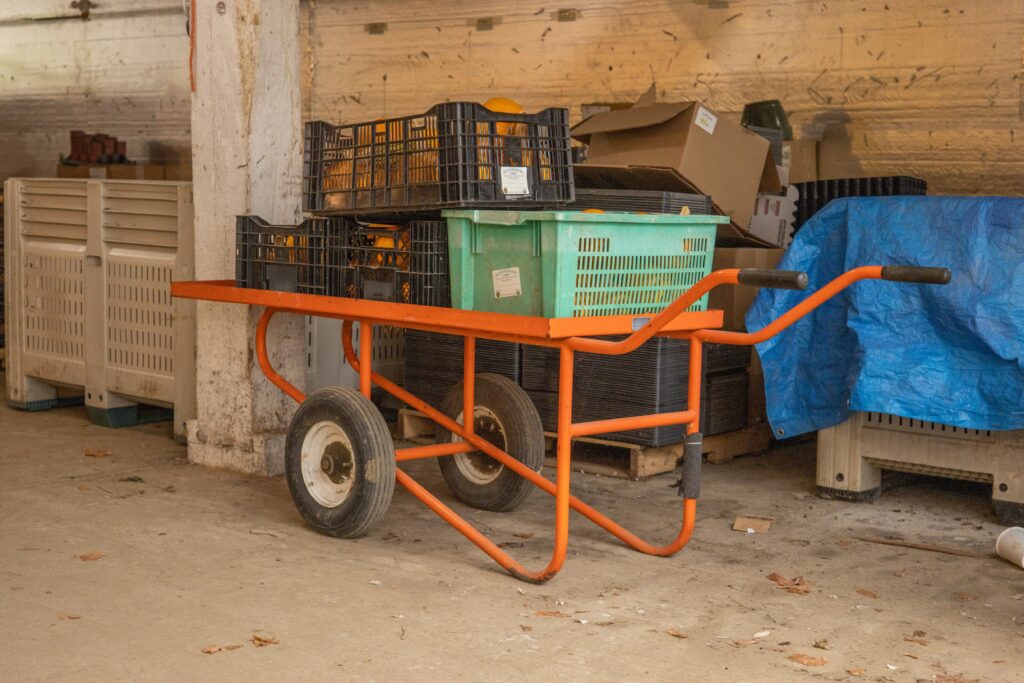
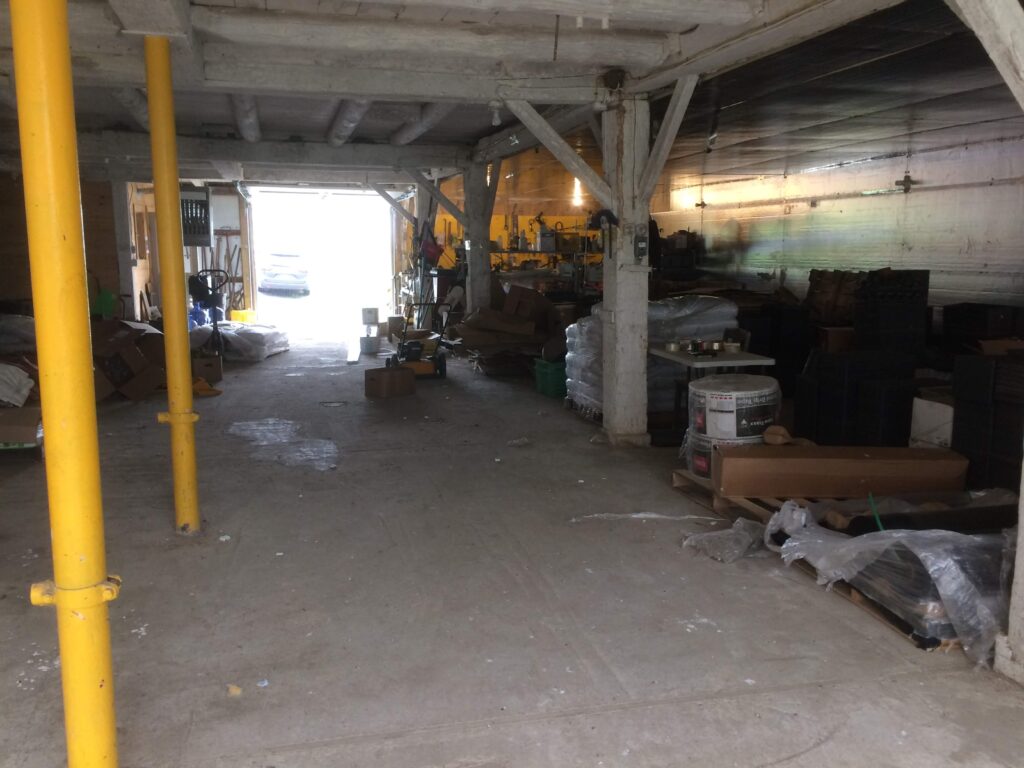
The area they were washing in was located on the south end of the barn and had a roof. They replaced the roof with translucent polycarbonate panels to let in natural light like a solarium. By installing this material on both the walls and ceiling it’s quite bright even on an overcast day.
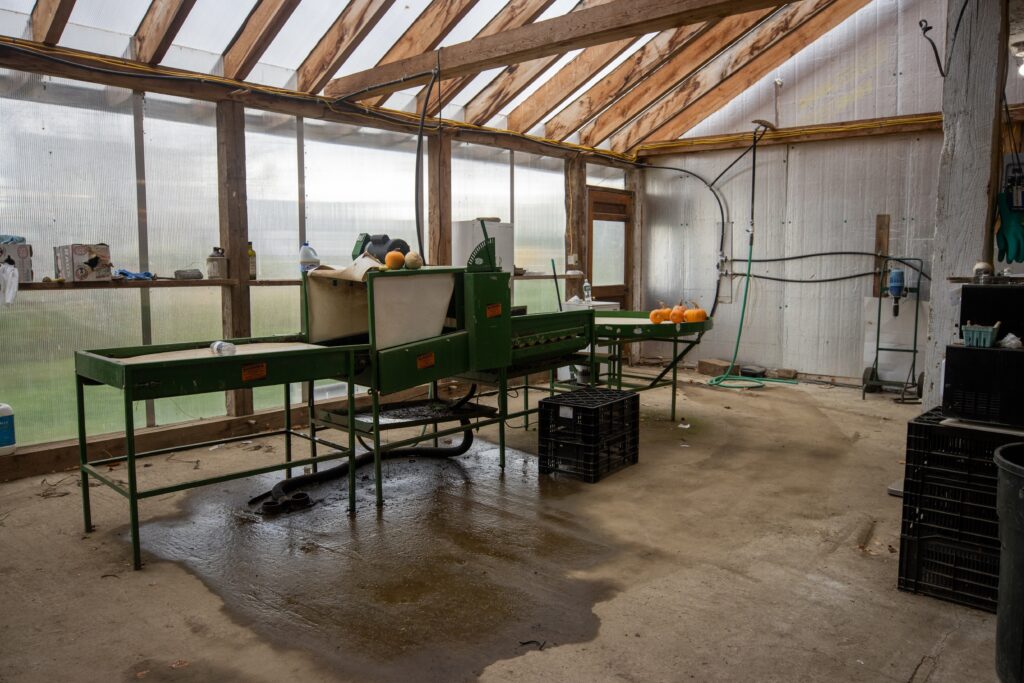
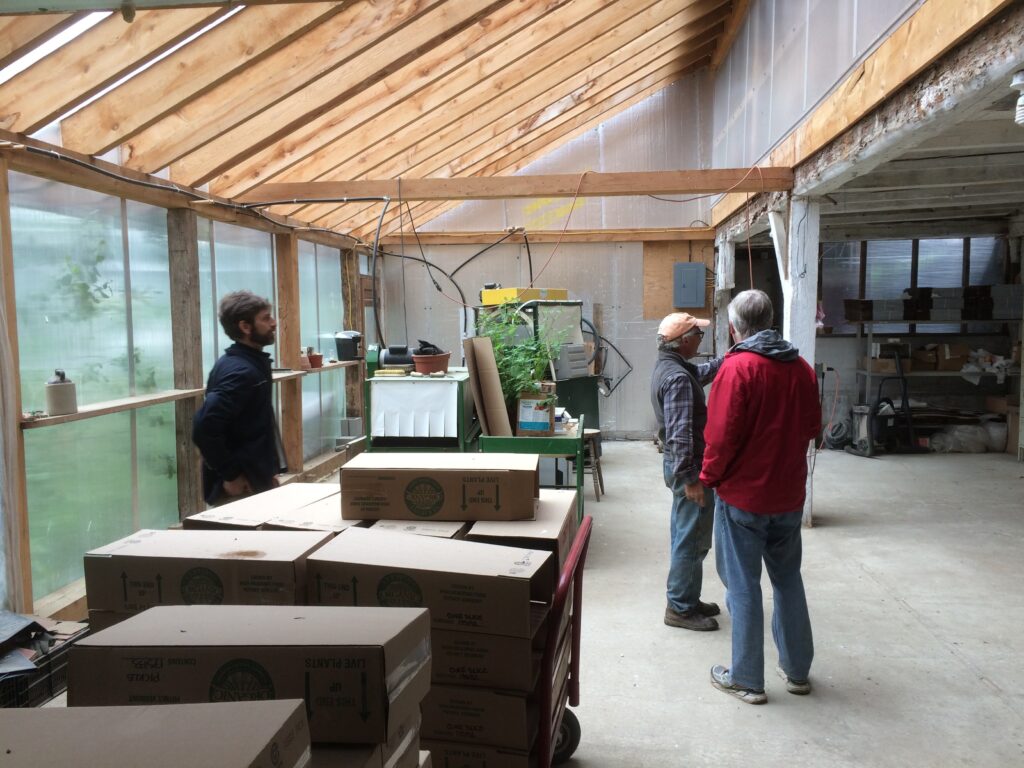
Wash Equipment
- Stainless sinks
- Brush Washer
- Sorting Table
- Willsie Barrel Washer
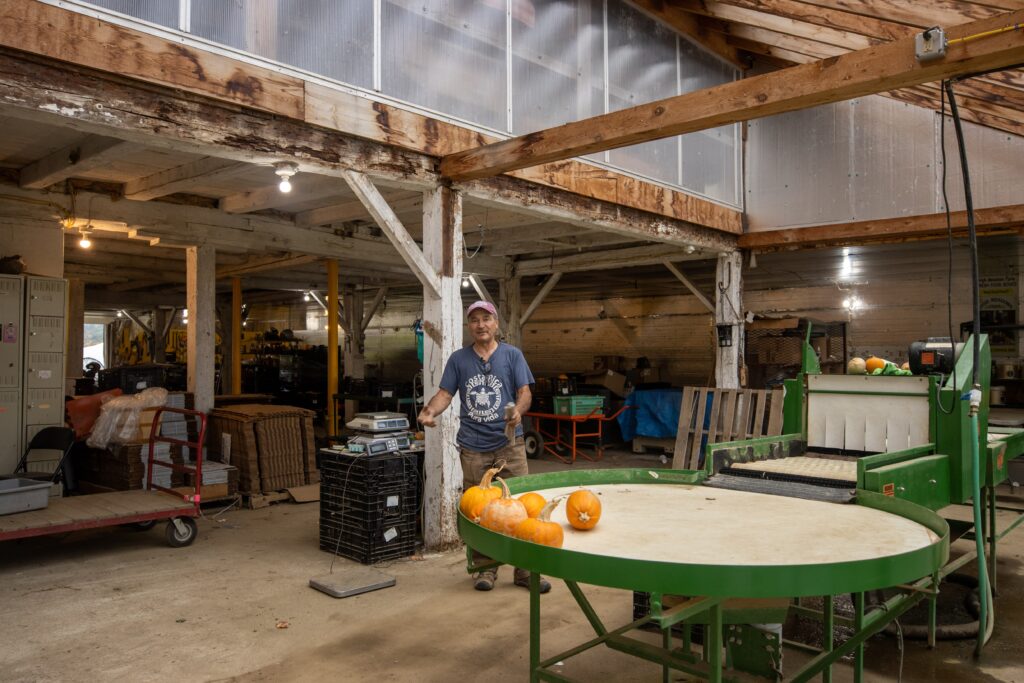
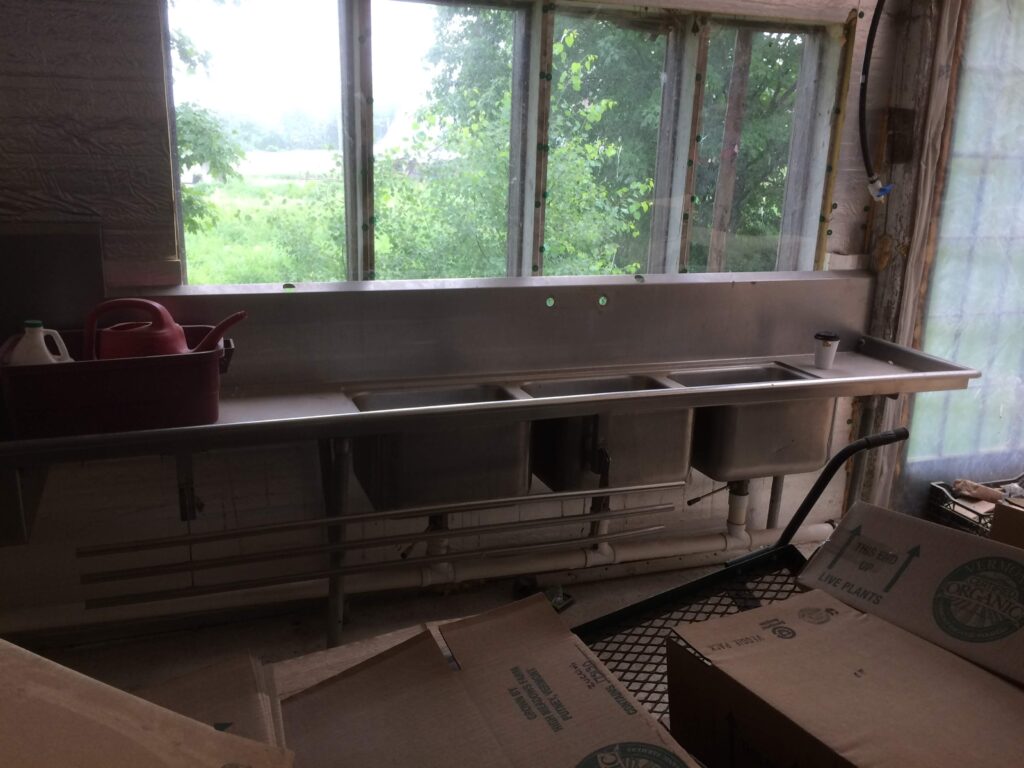
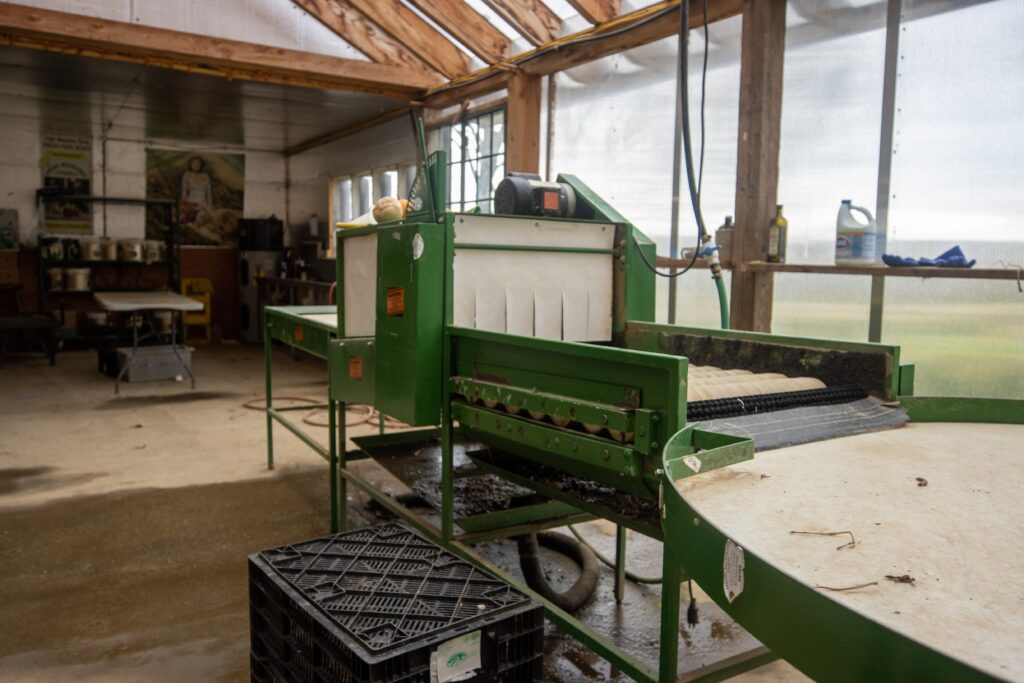
Opening up a space with natural light is really inviting and this area became the center of the farm due to its ease of use. Part of the renovation included insulating the barn. This provided a space to cure squash. Another benefit of increased light is it allows them to keep the barn cleaner than before because, “if you can see it, you can clean it.” Everything from the floor to the equipment became better maintained. Budgets are tight, but “your first build is your cheapest build” so do everything you think you might want from the start and “you never regret having too much good space.”
Overview of the Project
See More Post Harvest Case Studies
Share This Post
https://go.uvm.edu/highmeadows
Listen to Episodes of The Ag Engineering Podcast with Howard Prussack
Acknowledgements
This case study is possible because of the hard work, wisdom, and generosity of Howard Prussack at High Meadows Farm. We are grateful to them for their willingness to share their story and knowledge in this form so that others can learn.
Funding for this publication was made possible, in part, by the Food and Drug Administration through The Vermont Agency of Agriculture Food and Markets via the Integrated Extension Educational Programming in Support of the VAAFM Produce Program Grant 02200-FSMA-2018-01. The views expressed in the publication do not necessarily reflect the official policies of the U.S. Department of Agriculture, the U.S. Department of Health and Human Services or the Vermont Agency of Agriculture; nor does any mention of trade names, commercial practices, or organization imply endorsement by the United States Government or the State of Vermont. This project was supported by the Food and Drug Administration (FDA) of the U.S. Department of Health and Human Services (HHS) as part of a financial assistance award 02200-FSMA-24-01 totaling $30,000 with 100 percent funded by FDA/HHS. The contents are those of the author(s) and do not necessarily represent the official views of, nor an endorsement, by FDA/HHS, or the U.S. Government.
